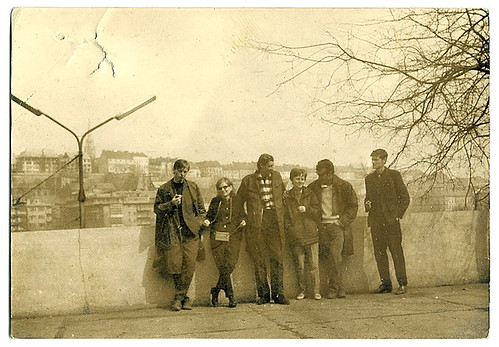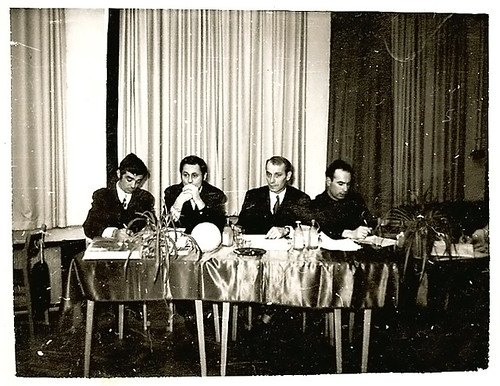This post was originally published in April 2009 on a blog that’s now dead, where it’s no longer online. Turns out I still had a draft saved here, so I thought I might as well republish it.
Or: a collection found on the street tells the story of minor apparatchiks in love.
Once every couple of months it’s big garbage day in my district. This means everyone takes out all the shit they don’t want anymore and dumps it on the sidewalk. It’s like Queen’s Day in Holland, except nobody’s selling anything. Mounds of stuff, discarded sofas, broken cupboards, old books, soiled shirts, cardboard boxes and piles of random garbage heaped onto the pavement in clusters.
This means lots of activity. Early in the morning the diggers trek into the neighbourhood. Elderly people, Roma. Stuff gets carted into car trunks, folded into plastic bags. Trabants with trailers that are stacked full take off to the suburbs.
In Holland you had rag and bone men until the sixties or so I think, who would come by to collect stuff that’s nowadays hauled off by the municipality’s “big trash” service on request. This is like that – just on a really large scale. Mostly it just means a lot of trash you have to circumnavigate when you walk down the street, but at its best, or worst, it has a near-Third World feel. A bony old man pulls a makeshift platform on wheels with cardboard stacked up a meter high down a busy road, passing cars swerving around him.
One of those days, a couple of months ago, we took a walk and rummaged through the piles out of curiosity. Found some dumpy Hungarian textbooks, a couple of novels in seventies covers. And photos. Not once, but twice, we found photos. One pile of photos sprawled over the pavement in Nyár utca, dirtied by shoes, some still shoved into a box along with other papers; postcards too, Christmas cards, holiday greetings from Slovakia. The other, larger pile at the beginning of Dohany Street, across from the synagogue, in a box in between newspapers, random stuff.
Budapest and Dunaújváros
I’ve dubbed the first collection “The apparatchik”. These photos belonged to a couple called Lajos and Zsuzsa Dömötör (I googled them, but found no leads). I assumed at first that Lajos had been a minor official, back under the old regime – but going through the photos and translating the texts of postcards with the help of fellow Flickr members (in particular GCsanadi), it turns out that it was Zsuzsa who must have been the apparatchik. Unfolding the story locked into these photos and postcards turned out to be fascinating – if like me, you’re the kind of person who finds fragments from the past’s quotidian life the most interesting thing.

The oldest photo in the set shows a group of young men and women at the shore of the Danube, in Budapest. Students? Were the Dömötörs among them, unmarried yet? Or just one of them? Handwritten on the back: March 1967, Budapest. On the left, in the background, is the Matthias Church on the Castle Hill – unframed, still, by the mirrorring windows of the Hilton hotel that was built right next to it later.
Whether one, or both of them were just visiting Budapest when this photo was taken or living there as a student, their hometown, once they were married, would soon be Dunaújváros. They lived there for a long time – judging on the postmarks, at least until 1984.
Dunaujvaros is a mid-sized industrial town some 35 miles south of Budapest, but not your typical one. It was built from scratch in the 1950s as a communist model city of sorts – except back then, it was called Sztálinváros, “Stalin City”. It had the country’s largest iron and steel works. Foreign visitors like Yuri Gagarin and President Sukarno were proudly shown around the town. By 1980, the city had some 60,000 inhabitants. But the collapse of heavy industry in the postcommunist era hit the town hard and now there are fewer than 50,000 left.

The apparatchik
What did the Dömötörs do there? Lajos, as this photo illustrates, appears to have been something official. Maybe he, too, was a minor apparatchik. Maybe he was just a teacher, or a supervisor in a factory. One of the two was a photo enthusiast: some of these photos were home-developed, and printed back to back on photopaper. Think small: this one’s less than 9×6 cm…
We do know a little more about Zsuzsa’s work, as she sent hom this postcard to her man:
Continue Reading »






